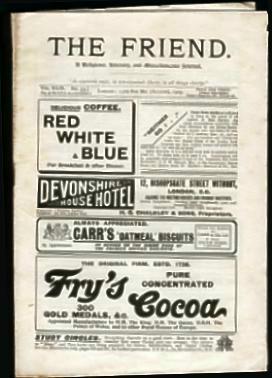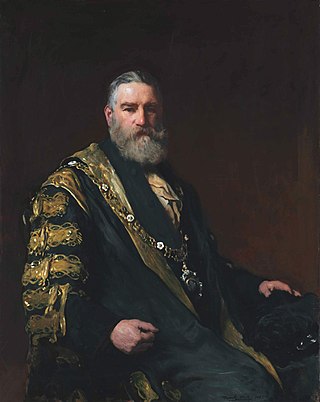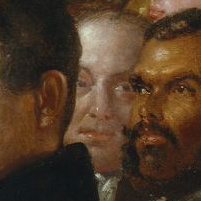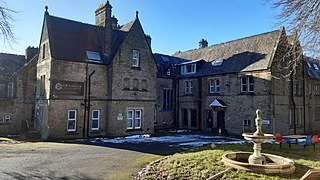This article needs additional citations for verification .(October 2022) |
Grove House School was a Quaker school in Tottenham, United Kingdom. [1]
This article needs additional citations for verification .(October 2022) |
Grove House School was a Quaker school in Tottenham, United Kingdom. [1]
The school was established in 1828 as a boarding school for 75 boys of the Quaker community, [2] initially under Thomas Binns. One of its founders was Josiah Forster, who had attended the Quaker school his grandfather had founded in 1752, Forster's School, also in Tottenham. Its curriculum was advanced for its time, and it did not use corporal punishment. After languishing around 1850, it was enlarged by Arthur Robert Abbott, who admitted non-Quaker boys but after buying the school in 1877, closed it, and took Anglican orders. It was located on the south side of Tottenham Green next to the building of a former Quaker school which had closed some two years before its opening. The site was acquired for Tottenham Polytechnic which became the College of North East London (now the College of Haringey, Enfield and North East London following a merger with Enfield College August 2009).
In 1890, the Quakers were to found another school, Leighton Park School, Reading as a direct descendant of Grove House. Following on from Grove House and in recognition of the earlier foundation of the school, the first senior Boarding House at Leighton Park was named Grove House. Grove House is a work by architect Alfred Waterhouse, who had attended the original Grove House School. Many families from Grove House continued the connection and sent their boys to Leighton Park, such as the Cadburys, Foxes, Frys, Backhouses and Hodgkins.

The Friend is a weekly Quaker magazine published in London, UK. It is the only Quaker weekly in the world, and has been published continuously since 1843. It began as a monthly and in January 1892 became a weekly. It is one of the oldest continuously published publications in the world still in operation. Others which began publication before The Friend have had lengthy interruptions in publication and/or have closed down.

Thomas Hodgkin, FBA was a British historian, biographer, banker, and Quaker minister. Hodgkin's magnum opus, Italy and Her Invaders, was an eight-volume work on the history of the wars in the Late Roman Empire.
Mowden is an area of west Darlington in the Borough of Darlington, County Durham, England. Nearby areas include Hummersknott to the south, Branksome to the north and Cockerton to the north-east.
Edward Pease, a woollen manufacturer from Darlington, England, was the main promoter of the Stockton and Darlington Railway, which opened in 1825. He is sometimes referred to as the "Father of the Railways".

Leighton Park School is a co-educational independent school for both day and boarding pupils in Reading in South East England. The school's ethos is closely tied to the Quaker values, having been founded as a Quaker School in 1890. The school's ethos is described as achievement with values, character and community. It is one of seven Quaker schools in England.
The Peace Society, International Peace Society or London Peace Society originally known as the Society for the Promotion of Permanent and Universal Peace, was a pioneering British pacifist organisation that was active from 1816 until the 1930s.

Sir Joseph Whitwell Pease, 1st Baronet was a British Liberal Party politician who sat in the House of Commons from 1865 to 1903.
Pease, in Middle English, was a noun referring to the vegetable pea; see that article for its etymology. The word survives into modern English in pease pudding.
The Pease family is an English and mostly Quaker family associated with Darlington, County Durham, and North Yorkshire, descended from Edward Pease of Darlington (1711–1785).

Alfred Emmott, 1st Baron Emmott, was a British businessman and Liberal Party politician.

George Gordon Hoskins FRIBA, was an English architect responsible for the design of several public buildings in the North East of England. His works include many large and important buildings - mansions, banks, hotels, hospitals, libraries, and schools.

Josiah Forster was an English teacher and philanthropist. He was an early member of the British and Foreign Anti-Slavery Society in 1839 and a supporter of the British and Foreign Bible Society. Both he and his wife were senior figures in the British Quakers.

Sir Robert Nicholas Fowler, 1st Baronet DL JP was a member of parliament and Lord Mayor of London.
John Hodgkin was an English barrister and Quaker preacher.

Alexander Peckover, 1st Baron Peckover LL FRGS, FSA, FLS, was an English Quaker banker, philanthropist and collector of ancient manuscripts.

Henry Theodore Hodgkin (1877–1933) was a medical doctor and a British Quaker missionary who, in the course of his 55-year life, co-founded the West China Union University in Chengdu, co-founded and led the first Christian pacifist movement, the International Fellowship of Reconciliation, and founded the Pendle Hill Quaker meeting and training center, in Wallingford, Pennsylvania.
The Hodgkin family is a British Quaker family where several members have excelled in science, medicine, and arts.

Robert Forster was a British Quaker. He was a surveyor, an estate manager and an abolitionist. He took a lifelong interest in education. He was cared for by his younger sister Anne Forster who died three days after him. He had notable brothers as well as sisters Mary Forster and Sarah Forster who were leading Quakers.

Benwell Dene is a Victorian building in the suburb of Benwell, Newcastle Upon Tyne, England. It was designed by Alfred Waterhouse for Dr Thomas Hodgkin and was built in 1865. Hodgkin donated the house to the Royal Victoria Home in 1894, and bequeathed the gardens and grounds to the people of Newcastle as a public park. The building subsequently became the Royal Victoria School for the Blind. After the school's closure in 1985, the structure was converted into a hotel. It is a Grade II listed building.